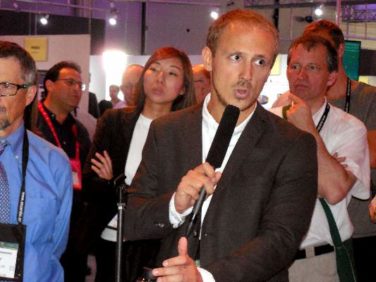AT AN FDA ADVISORY COMMITTEE MEETING
SILVER SPRING, MD. (FRONTLINE MEDICAL NEWS) – The majority of a Food and Drug Administration Advisory panel agreed that the benefits of adding necitumumab to gemcitabine and cisplatin for patients with squamous non–small cell lung cancer outweighed the risks.
At the meeting on July 9, the FDA’s Oncologic Drugs Advisory Committee reviewed data from a study that evaluated the anti–epidermal growth factor receptor monoclonal antibody in more than 1,000 patients with stage IV disease. The SQUIRE study was submitted to the FDA by Eli Lilly to support approval of necitumumab for the indication now under review: for use as a first-line treatment, in combination with gemcitabine and cisplatin, for patients with locally advanced or metastatic squamous non–small cell lung cancer (NSCLC). Necitumumab is a recombinant human IgG1 monoclonal antibody that is designed to block the ligand binding site of the human EGFR.
Despite a modest effect on overall survival, a very small but statistically significant effect on progression-free survival, and some safety concerns, 11 of the 12 panelists agreed that the efficacy and safety results of the trial supported a “positive benefit risk assessment” of necitumumab combined with gemcitabine and cisplatin for this group of patients, the main question they were asked by the FDA to discuss. The panel was not asked to specifically vote on whether to recommend approval.
The SQUIRE study, an international phase III study of 1,093 patients with stage IV squamous NSCLC, who had not received chemotherapy for advanced disease, evaluated the safety and efficacy of gemcitabine and cisplatin, with or without necitumumab, administered every 3 weeks, until disease progressed or toxicity became unacceptable, for a maximum of six cycles. The median age of patients was 62 years; they were mostly men and were heavy smokers; 36 patients were enrolled in the United States. (Patients were not selected based on EGFR protein expression but based on tissue pathology.)
Median overall survival (OS), the primary endpoint, was 11.5 months in the necitumumab-treated arm, vs. 9.9 months among controls, a 1.6 month difference that was statistically significant, representing a reduced risk of 16% (hazard ratio, 0.84). Progression-free survival (PFS) was a median of 5.7 months among those in the necitumumab-treated group, vs. 5.5 months, which was also statistically significant and represented a 15% reduced risk (HR, 0.85). There was no significant difference in the objective response rate (ORR), which was 31% among those in the necitumumab arm and 29% among those in the control arm. This is the first study to show an improvement in survival for a first-line treatment for squamous lung cancer, the company officials pointed out.
In the study, there were more venous thromboembolic events (VTEs; 9% vs. 5%) and more cases of sudden death and deaths “not otherwise specified” (2.2% vs. 0.5%) in the necitumumab-treated arm. There were also more cases of hypomagnesemia and skin rashes, and the FDA reviewers pointed out that several cases of sudden death occurred in patients with very low serum magnesium levels. VTEs and sudden or unexplained deaths were also higher among necitumumab-treated patients in another study that evaluated necitumumab in patients with nonsquamous NSCLC, which was stopped early because of the VTE increase; that study found no improvements in OS, PFS or ORR.
Among those agreeing that the risk-benefit assessment was positive, Dr. Michael Menefee of the Mayo Clinic, Jacksonville, Fla., said “Yes was the simple answer, but there are still caveats” regarding toxicity and the magnitude of the overall benefit.
“The survival benefit is modest but it’s real,” said Dr. Deborah Armstrong, the panel chair and professor of oncology, Johns Hopkins University, Baltimore, who also voted positively. She strongly encouraged continuing efforts to manage the toxicities of necitumumab, which she said might improve the risk-benefit balance further.
The panelist who did not agree was Dr. Tito Fojo, a senior investigator and director of the medical oncology fellowship program at the National Cancer Institute. He said that the study did not provide him with enough confidence. Noting it is a very difficult disease to treat, he said, “I just wish the data were much better.” His concerns included the possibility that those in the control arm, who received a median of five treatment cycles may have received less chemotherapy than those in the necitumumab arm, who received a median of six cycles.
Speaking on behalf of Eli Lilly at the meeting, Dr. David Gandara, director of the thoracic oncology program at the University of California Davis Comprehensive Cancer Center, said that although EGFR mutations are rare in squamous NSCLC, “the EGFR pathway itself is biologically relevant.” Necitumumab “attacks that pathway in ways independent of those associated with EGFR tyrosine-kinase inhibitors and independent of EGFR mutation status,” he added.
The FDA usually follows the recommendations of its advisory panels. Panelists have been cleared of potential conflicts of interest related to the topic of the meeting. The FDA decision is expected by the end of 2015, an Eli Lilly spokesperson said.



